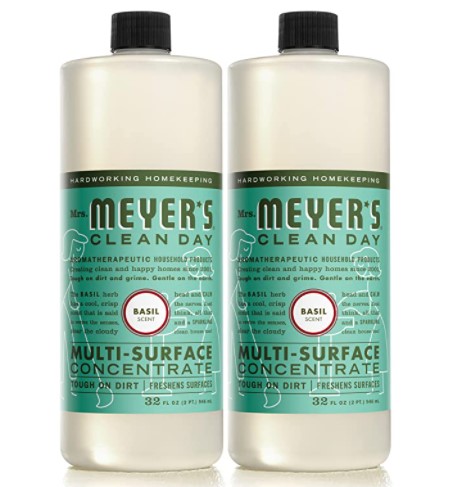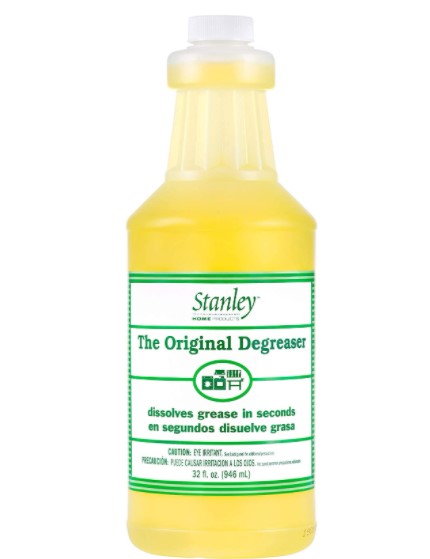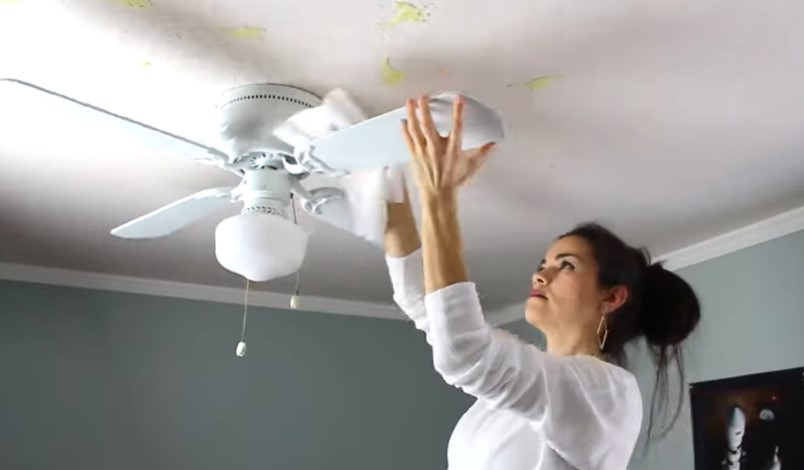If you are proud of the ceiling fans in your house, you need to make sure they look great at all times. To do that, you must provide the proper care and maintenance, which includes cleaning your ceiling fans from time to time. This is why we’ll be sharing with you today all the right tips and tricks on how to clean ceiling fans properly.
Cleaning ceiling fans is the right thing to do if you want to maintain a clean environment at home; however, it is equally important to clean them to ensure their longevity and proper functioning. In other words, if you don’t want to replace your ceiling fans for a while, keep them clean and make sure you follow the proper guidelines when cleaning your investment.
Knowing how to clean ceiling fans can undoubtedly save you from big headaches in the future, and though it may not sound as difficult, you must follow safety steps at all times. If you’ve been planning to clean your ceiling fans, you are in the right place as we’ll be showing you exactly what you need and how to proceed when cleaning ceiling fans. Continue reading and learn everything you need to know about it.
How to Clean Ceiling Fans FAQs
Why do ceiling fans get so dirty?
Dust mites breed in dusty areas. Ceiling fans easily become dusty, and mites accumulate on the fan’s blades. When the fan is on, it blows dust and mites all over a room.
Can a dusty ceiling fan make you sick?
Fans can circulate dust and pollen in the air, triggering allergies in some people. The fan blades themselves are another unwelcome source of dust. If you inhale these allergens, you could experience symptoms like runny nose, itchy throat, sneezing, watery eyes, or breathing difficulties.
How do I get thick dust off my ceiling fan?
While the globes soak, swipe the fan blades with a microfiber cloth to minimize swirling dust. If the dust is thick, dampen the cloth with an all-purpose cleaner or spray lightly. Be careful not to spray near the ceiling fan motor. After cleaning the blades, rinse out and dry off the globes and replace them.
How often should you clean ceiling fans?
Ceiling fans should be cleaned once every other month. If you live in a particularly dusty environment or often keep your windows open, they should be cleaned monthly.
How do I clean my ceiling fan with a vacuum cleaner?
Use the flat and wide dusting attachment to clean a ceiling fan with a vacuum cleaner. Extend the handle and run it along the top and bottom of the fan’s blades. Brush each blade slowly and smoothly in one direction so the dust is picked up effectively.
How to clean a ceiling fan without climbing?
Typically you would need to stand on a sturdy step stool or step ladder. However, if you haven’t got one, a simple tip for cleaning without a ladder is using an extendable duster with flexible heads. This will get most of the dust and debris off the blades.
How to clean fan blades?
Fan blades with heavy buildup need more attention. Wipe the fan blades and base with a mild cleaner and a cloth. You can also use a 50/50 white vinegar and water mix. Use extendable fan dusters to dust both sides of the blades and the base.
Can you clean a ceiling fan using a pillowcase?
Slowly insert the ceiling fan blades into an old pillowcase one at a time. Once you place the pillowcase over a fan blade, use the case to wipe the dust off the sides, top, and bottom. Pull the pillowcase away to wipe any dust directly into the pillowcase. Once you’ve wiped each fan blade, take the pillowcase outdoors, turn it inside out and shake it. Then wash it in the laundry.
How to keep a ceiling fan clean?
Once your ceiling fan is clean, ensure it stays that way with regular dusting. Dust the ceiling fan blades often to keep dust and dirt from building up. When the fan runs more often in warmer months, wipe them down weekly.
How to Clean Ceiling Fans
Method #1: Dusting
- Lay down an old sheet or painter’s tarp under your ceiling fan and set up your ladder.
- Remove any cobwebs and dust from the main housing of the fan and the ceiling around the fan with a microfiber cloth.
- Remove the globe or globes and place them in a sink of soapy, warm water. To protect the fixtures from breaking, place a dishcloth or towel in the bottom of the sink.
- While the globes soak, swipe the fan blades with a microfiber cloth to minimize swirling dust. If the dust is thick, dampen the cloth with an all-purpose cleaner or spray lightly. Be careful not to spray near the ceiling fan motor.
- After cleaning the blades, rinse out and dry off the globes and replace them.
Microfiber Cleaning Cloth
Ultra-soft and highly absorbent microfiber cleaning cloths are great for cleaning windows, kitchenware, cars, or other delicate surfaces.
It is made of 85% Polyester 15% Nylon. These non-abrasive cleaning rags can instantly soak up water from the countertop and tables without lint or streaks left behind.
Clean with or without water, from worktops appliances to kitchens, bathrooms, mirrors, etc., they will make your house sparkling.

Features:
- Microfiber
- Reusable
- Long-Lasting
Mrs. Meyer’s Clean Day Multi-Surface Cleaner
Hard-working multi-surface cleaner concentrate that is tough on dirt. Biodegradable cleaners for all non-porous multi-surfaces.
Garden-fresh Basil multi-surface concentrate has a cool, crisp scent that is uplifting & grounding.
Safe for use on all non-porous home surfaces. It effectively cleans floors, counters, and surfaces in bathrooms, kitchens, or any room both inside and outside.

Features:
- Multi-surface
- Liquid
Method #2: Blades Quick Cleaning
- Use a pillowcase to wipe down the motor housing and the ceiling around the fan, letting the pillowcase capture the dirt and dust.
- Slide the pillowcase over a fan blade and use firm pressure as you pull the pillowcase back toward the end of the blade.
- Repeat until all the fan blades are clean.
- Shake out the pillowcase outdoors and then throw it in the washer.
- Alternatively, you can use a duster or wipe both sides of the fan blades at once using a long-handled U-shaped brush.
Microfiber Feather Duster
Get to areas other dusters can’t the effortless way. Unlike other cleaners with rigid heads that struggle to dust around corners and tricky spots, our microfiber duster has a cleaning head that is flexible and bendable up to 90°.
With an extendable handle that telescopes from 30″ to 100″, this microfiber feather duster is the best way to clean blinds, lighting fixtures, ceiling fans, framed pictures, and clear cobwebs.
It features innovative split fiber technology and becomes electrostatically charged as you use it, attracting dust, pollen, and hairs with ease.

Features:
- Bendable Head
- Non-Scratch
- Washable
Method #3: Deep Cleaning, Remove Dirt and Grime
- If your ceiling fan has built-up grime, layout your sheet to catch the debris and set up your ladder.
- Starting at the canopy and working your way down, use a damp microfiber cloth to wipe away grime and greasy residue.
- If the fan blades are greasy, pour a small amount of degreaser onto a microfiber cloth and wipe them thoroughly.
- Clean the fan blades from the inside out, and make sure you get into the nooks and crannies where the blades attach.
STANLEY HOME PRODUCTS Original Degreaser
Cut through that through grease and grime in just seconds. This Stanley Home Products Original Degreaser does the tough cleaning for you.
Use this All-Purpose Cleaner to remove dirt, grease, and grime from cookware, grills, dishes, woodwork, countertops, broilers, laundry, equipment, and tools.
Very cost-effective, one 32 oz. bottle contains enough cleaning product for 32 gallons of powerful Stanley Degreaser solution.

Features:
- Multipurpose
- Removes Grime
- Liquid
Additional Tips on How to Clean Ceiling Fans
- Before you shut it off for cleaning, take note of the direction the blades are spinning. If you haven’t switched the fan direction for the season, this is a good time to do so; clockwise warms a room; counter-clockwise cools it.
- Before cleaning, place an old sheet or drop cloth under the fan to collect the dust. If neither is available, be sure to vacuum the floor under the fan afterward.
- Wear a dust mask and hairnet or cap when dusting underneath a ceiling fan to avoid inhaling dust particles.
- Don’t forget the sides of the blades. They get just as dirty as the rest of the blades. Wipe down the sides of the blades with the cleaner mix or use disinfecting wipes.
- If the ceiling fan has a glass globe, remove it and wash it in warm, soapy water. Dry thoroughly, then put them back on the ceiling fan.
- When cleaning your fan is a great time to swap out the light bulbs with higher-efficiency bulbs that will last longer and save you money. If the bulbs are still good, wipe them with a dry microfiber cloth to remove dust.
- Don’t forget to wipe the pull chain and motor with a cloth. Use compressed air to remove interior dust in the motor housing.
- Don’t spray liquid on the fan, and don’t apply heavy pressure, which can bend the blades. And let the blades dry thoroughly before turning your fan back on; damp blades attract dust.
Keeping a clean fan applies to any fan, no matter how much it costs, the room you have it, or the brand; however, some brands tend to calculate less dust check which are the Best Ceiling Fan Brands in the market.



